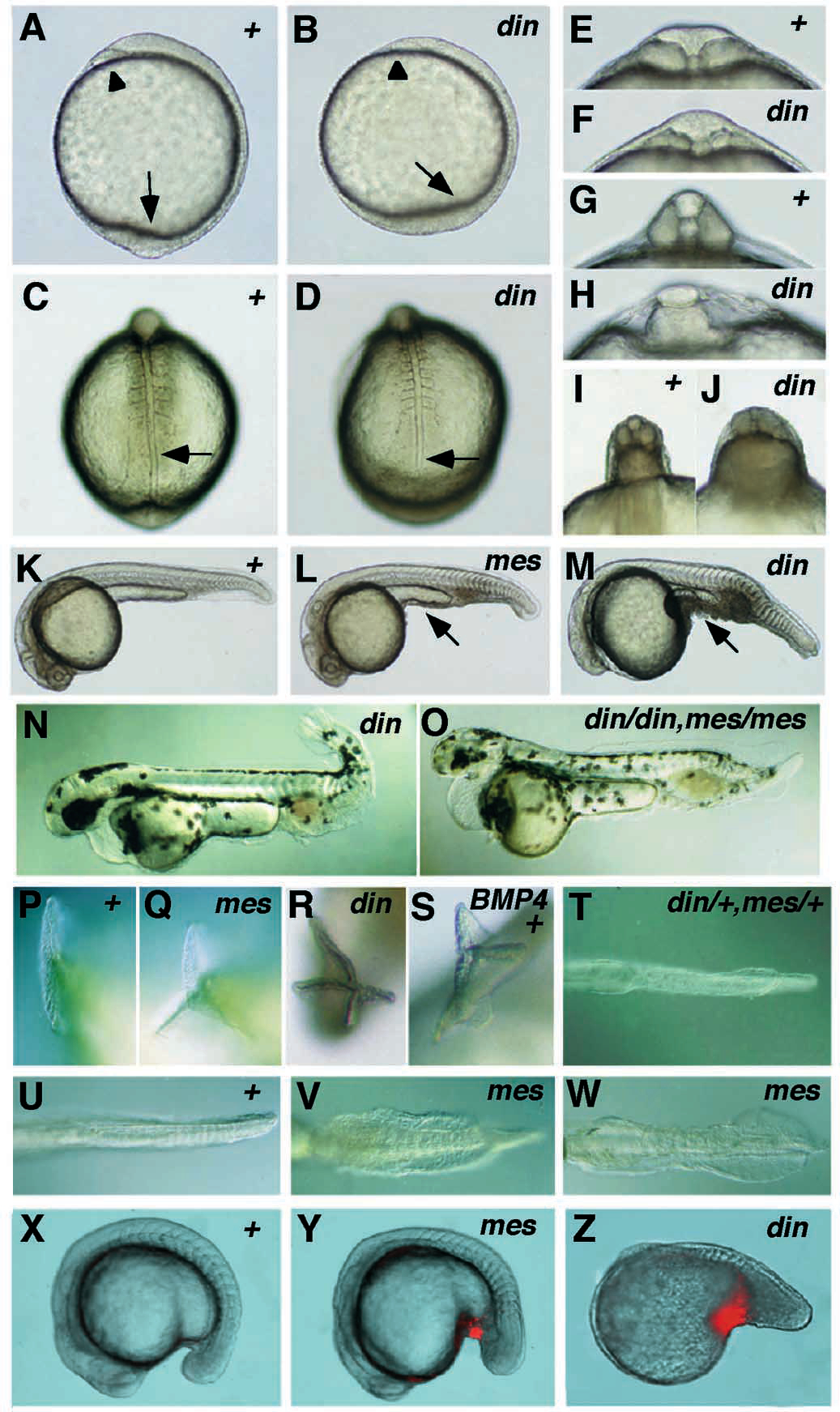Fig. 1 Morphological characteristics of the dino (dintm84) and mercedes (mestm305) mutant embryos. Wild-type embryos are indicated with ‘+’. (A,B) Tailbud stage, lateral view: the pillow is marked with an arrowhead, the tailbud with an arrow. (C,D) 8-somite stage, dorsal view: the end of the notochord and the corresponding position in the wild-type embryo are marked by an arrow. (E,F) 3- somite stage, optical cross section at the level of the 2nd somite: the anterior somites of the mutant are smaller and the neural tube is of normal size. (G,H) 8-somite stage, optical cross section at the level of the 6th somite: the notochord is lost and the somites are fused in dino mutants with a strong phenotype. (I,J) 15-somite stage, optical cross section at the level of the 13th somite: the posterior somites are larger and the neural tube is smaller in dino mutants. (K,L,M) 24 hours, lateral view: cells at the ventral side of the yolk extension are marked with an arrow. (N,O) 48 hours, lateral view: note the smaller head in the din mes double mutant. (P-S) 36 hours, posterior view of tail fin; (S) wild-type embryo injected with Xenopus Bmp-4 mRNA. (T-W) 36 hours, ventral view of tail fin: (V) mestm305/mestm305 embryo from heterozygous mother; (W) mestm305/mestm305 embryo from homozygous mother. (X-Z) Lateral views of (X) wild-type, 20- somite stage embryo; (Y) mestm305, 20-somite stage embryo; (Z) dintt250, 15-somite stage embryo, showing acridine orange staining. Apoptotic cells (red) can be detected ventral of the forming yolk extension in din and mes mutant embryos.
Image
Figure Caption
Figure Data
Acknowledgments
This image is the copyrighted work of the attributed author or publisher, and
ZFIN has permission only to display this image to its users.
Additional permissions should be obtained from the applicable author or publisher of the image.
Full text @ Development

